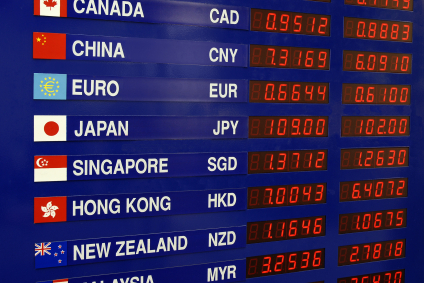Introduction

Image: movingaveragetrader.com
When venturing into the global currency exchange market, known as forex, it’s crucial to comprehend the concept of cross-currency charges. Forex trading involves exchanging one currency for another, and typically, these transactions are facilitated through intermediary currencies. It’s during these conversions that cross-currency charges, also referred to as exchange rate markups, can arise. To optimize your forex transactions and minimize unnecessary costs, a thorough understanding of these charges is essential.
Understanding Cross-Currency Charges
Cross-currency charges are additional fees levied by financial institutions or platforms facilitating currency conversions. These charges represent the markup added to the interbank exchange rate, which is the rate at which banks trade currencies amongst themselves. The spread between the interbank rate and the rate offered to you by a third-party provider constitutes the cross-currency charge.
The amount of cross-currency charge varies depending on several factors:
- Source and destination currencies: Less frequently traded currency pairs (known as exotic currency pairs) generally incur higher cross-currency charges.
- Transaction amount: Larger transactions often attract lower cross-currency charges as a percentage due to reduced transaction costs.
- Provider: Different providers charge varying cross-currency rates. It’s wise to compare rates from multiple providers before finalizing your transaction.
Minimizing Cross-Currency Charges
Navigating the forex market with minimal cross-currency charges requires strategic decision-making. Here are some helpful tips:
- Opt for direct currency pairs: Whenever possible, trade currency pairs with direct trading relationships to eliminate the need for intermediate conversions and, consequently, cross-currency charges.
- Seek better exchange rates: Compare cross-currency rates offered by different providers, including banks, online brokerages, and currency exchange services.
- Utilize platforms with competitive spreads: Choose trading platforms that offer narrow spreads between the interbank rate and their quoted rates.
- Negotiate with your provider: For larger transactions, it’s advisable to negotiate with your financial institution or forex broker for more favorable cross-currency rates.
- Consider using a currency converter with low fees: If you’re not trading forex but need to convert currencies, explore currency converters with transparent and low transaction fees.
Conclusion
In summary, cross-currency charges are fees incurred when exchanging currencies through an intermediary currency. By understanding the factors influencing these charges and implementing strategic measures, you can minimize their impact on your forex transactions and maximize your savings. Remember to explore direct currency pairs, compare exchange rates, and seek reputable providers to enjoy the benefits of informed currency exchange. Whether you’re diving into forex trading or simply require currency conversion for international travel or other purposes, staying informed about cross-currency charges empowers you to make savvy financial decisions.

Image: www.liggat.org
Forex Plus Cross Currency Charge






